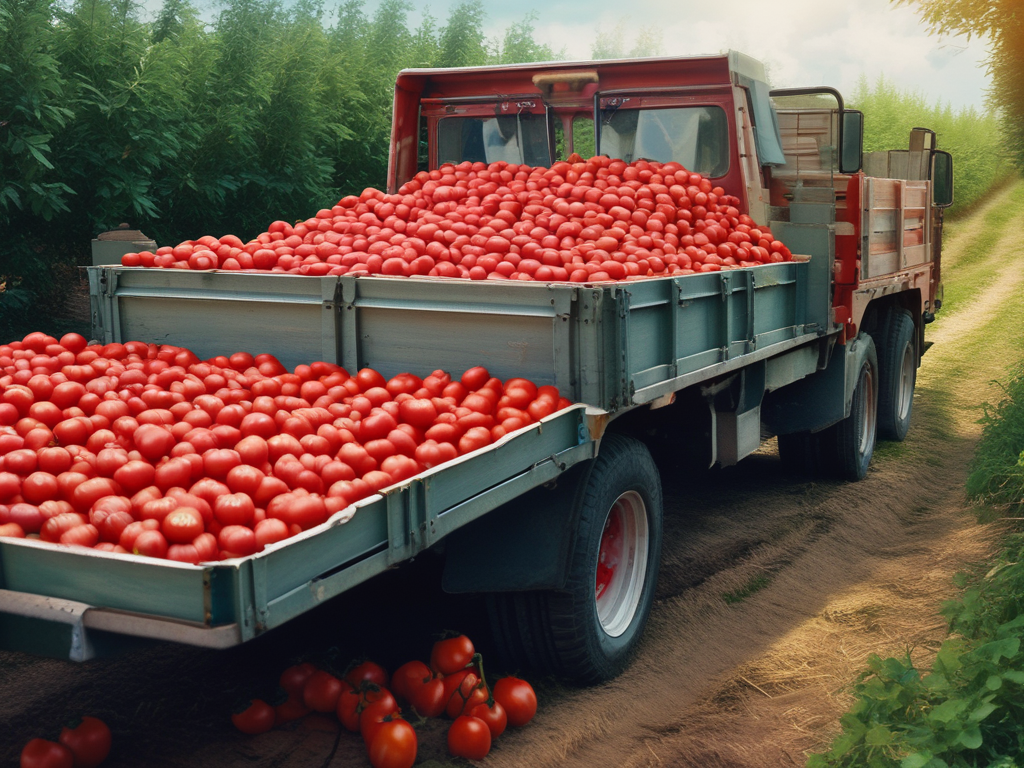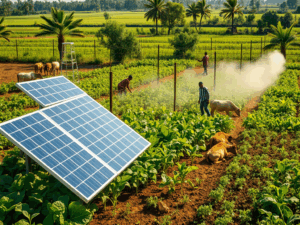Post-harvest losses are a significant challenge for farmers in Nigeria and across Africa, where up to 40% of food produced never reaches the consumer due to inadequate storage, transportation, and market infrastructure. These losses not only undermine food security but also lead to economic hardships for farmers. This article explores the worst-case scenario of post-harvest losses and offers actionable strategies to navigate and mitigate these challenges.
The Worst-Case Scenario
Imagine a farmer in Nigeria’s Benue State, often referred to as the “Food Basket of the Nation,” who has just harvested a bumper crop of tomatoes. Despite the hard work, the farmer faces a dire situation as post-harvest losses threaten to decimate the potential profits.
Storage Failures
Inadequate storage facilities lead to rapid spoilage. Tomatoes, being highly perishable, require proper storage conditions to prolong their shelf life. Without access to cold storage or efficient preservation methods, up to 50% of the harvest spoils within days, leading to substantial financial loss. In Kaduna State, the lack of proper storage facilities has led to significant post-harvest losses for tomato farmers. According to the Nigerian Stored Products Research Institute (NSPRI), farmers lose up to 45% of their tomato harvest due to inadequate storage and handling practices.
Transportation Woes
Poor transportation infrastructure exacerbates post-harvest losses. Bad roads and lack of refrigerated transport mean that a significant portion of produce is damaged or spoiled before it reaches the market. In Kenya, poor roads and lack of proper transport facilities lead to substantial post-harvest losses. According to the Food and Agriculture Organization (FAO), maize farmers in the Rift Valley region lose 30-40% of their produce during transportation due to inadequate infrastructure.
Market Access Issues
Limited access to markets further compounds the problem. Farmers often rely on middlemen who offer low prices, and the lack of direct market access means that unsold produce goes to waste. Cocoa farmers in Ghana face significant post-harvest losses due to market access issues. According to the Ghana Cocoa Board, approximately 20% of cocoa beans are lost post-harvest due to inadequate market linkages and poor storage facilities.
Navigating Post-Harvest Losses
While the worst-case scenario is daunting, there are several strategies that farmers and stakeholders can employ to mitigate post-harvest losses and secure better outcomes.
Improved Storage Solutions
Investing in modern storage facilities, such as cold storage units and hermetic storage bags, can significantly reduce spoilage. These technologies help maintain the quality of produce and extend shelf life. The introduction of PICS (Purdue Improved Crop Storage) bags in Nigeria has helped reduce post-harvest losses of grains by up to 80%. These airtight bags prevent moisture and pest infestation, preserving the quality of stored grains.
Efficient Transportation
Developing better transportation infrastructure and investing in refrigerated transport can ensure that produce reaches markets in optimal condition. Governments and private investors should prioritize road improvements and cold chain logistics. Ethiopia’s investment in cold chain logistics for its floriculture industry has significantly reduced post-harvest losses. The improved transportation network has boosted the country’s position as a leading exporter of flowers, with losses minimized by up to 50% .
Market Access and Information
Empowering farmers with market information and direct access to buyers can eliminate the dependency on middlemen and reduce unsold produce. Mobile technology and online platforms can bridge the gap between farmers and markets. The Agri-Hub Rwanda platform connects farmers directly with buyers, providing market information and enabling direct sales. This has helped reduce post-harvest losses and increased farmers’ incomes by up to 25%.
Training and Capacity Building
Educating farmers on best practices for post-harvest handling, storage, and transportation is crucial. Extension services and training programs can equip farmers with the knowledge and skills needed to minimize losses. For example, the National Agricultural Advisory Services (NAADS) in Uganda offers training programs on post-harvest handling techniques. This initiative has led to a reduction in losses and improved food security for many Ugandan farmers.
Conclusion
Navigating the worst-case scenario of post-harvest losses requires a multifaceted approach involving improved storage solutions, efficient transportation, enhanced market access, and farmer education. By adopting these strategies, farmers in Nigeria and across Africa can mitigate the impact of post-harvest losses, ensuring better food security and economic stability. The examples from Nigeria, Kenya, Ghana, Ethiopia, Rwanda, and Uganda demonstrate that with the right interventions, significant progress can be made in reducing post-harvest losses and enhancing the livelihoods of farmers.
Subscribe to the agribusinessspace to join our community for more expert tips, product reviews, and exclusive insights into sustainable agribusiness practices! And you might be on the line to receive our free downloadable resources




